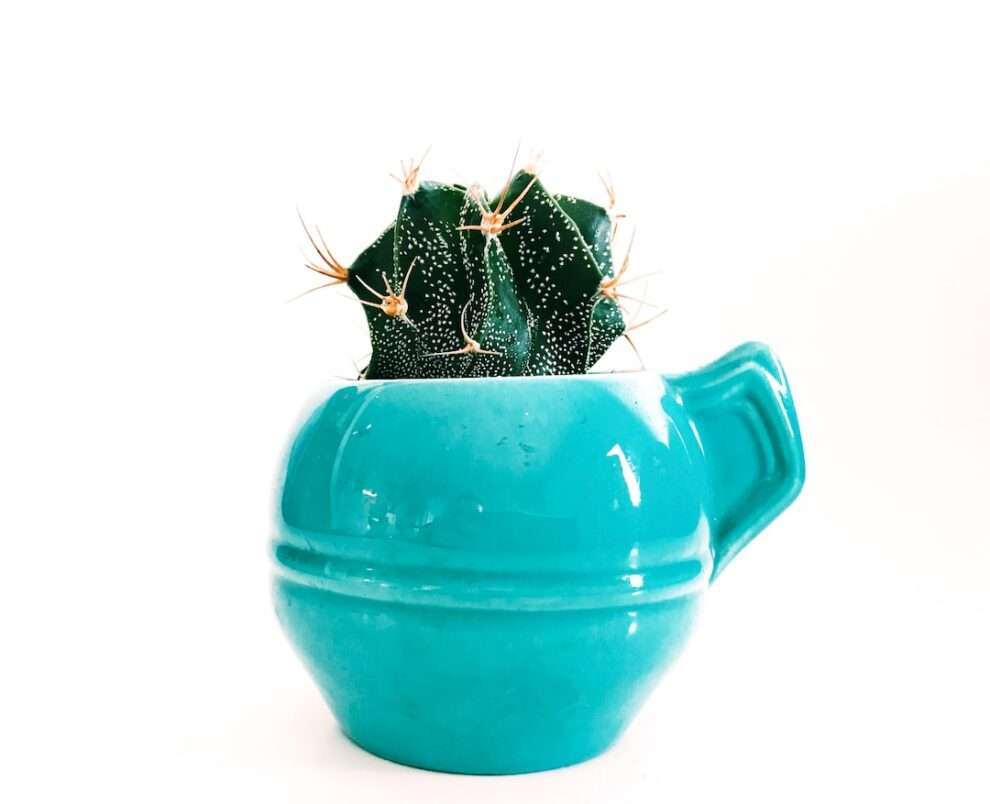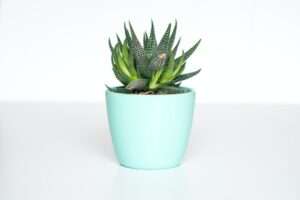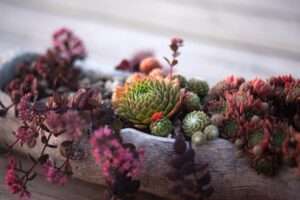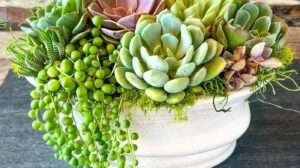Succulent plants are a unique and fascinating addition to any garden design. These plants are known for their ability to store water in their leaves, stems, and roots, making them highly drought-tolerant and low-maintenance. Outdoor succulent plants come in a variety of shapes, sizes, and colors, making them versatile and adaptable to different garden styles. They can be used as focal points or accents in garden design, adding a touch of beauty and uniqueness to any outdoor space.
Benefits of Using Succulent Plants in Garden Design
One of the main benefits of using succulent plants in garden design is their ability to thrive in dry conditions. These plants are highly drought-tolerant, meaning they can survive with minimal water requirements. This makes them an excellent choice for gardens in arid climates or areas with limited water resources. Additionally, succulent plants are low-maintenance, requiring little attention or care once established. They are resilient and can withstand harsh weather conditions, making them an ideal choice for busy gardeners or those with limited time for gardening.
Another benefit of using succulent plants in garden design is their versatility and adaptability. These plants come in a wide range of shapes, sizes, and colors, allowing for endless possibilities when it comes to incorporating them into your garden. Whether you have a modern, minimalist garden or a lush, tropical oasis, there is a succulent plant that will complement your design style. They can be used as focal points, drawing attention and creating visual interest, or as accents, adding pops of color and texture throughout the garden.
In addition to their practical benefits, succulent plants are also aesthetically pleasing and unique. Their fleshy leaves and unusual shapes make them stand out among other plants in the garden. Whether you choose a spiky agave or a rosette-shaped echeveria, these plants are sure to catch the eye and add a touch of beauty to your outdoor space. They can be used as statement pieces, creating a focal point in the garden, or as subtle accents, adding interest and texture to plantings.
Top 10 Outdoor Succulent Plants for Garden Design
1. Aloe Vera: Aloe vera is a versatile succulent that can be used in a variety of garden styles. It has thick, fleshy leaves that contain a gel-like substance with numerous health benefits. In the garden, aloe vera can be used as a focal point or accent plant, adding height and texture to plantings. It is drought-tolerant and low-maintenance, making it an ideal choice for busy gardeners.
2. Agave Attenuata: Agave attenuata, also known as the foxtail agave, is a striking succulent with rosettes of soft, fleshy leaves. It is commonly used in garden borders or as a standalone specimen plant. Agave attenuata is drought-tolerant and low-maintenance, making it an excellent choice for gardens with limited water resources.
3. Echeveria: Echeveria is a beautiful succulent with rosettes of thick, fleshy leaves in various colors and textures. It is commonly used in garden pots and containers, adding a touch of elegance and beauty to outdoor spaces. Echeveria is drought-tolerant and low-maintenance, making it an ideal choice for those who want to add a pop of color to their garden without much effort.
4. Sedum: Sedum is a low-maintenance succulent that is commonly used as ground cover in garden design. It has small, fleshy leaves that form dense mats or clumps, creating a carpet-like effect in the garden. Sedum is drought-tolerant and can withstand harsh weather conditions, making it an excellent choice for gardens with poor soil or limited water resources.
5. Graptopetalum: Graptopetalum is a unique succulent with rosettes of thick, fleshy leaves that come in various colors and textures. It is commonly used in garden rockeries or as a standalone specimen plant. Graptopetalum is drought-tolerant and low-maintenance, making it an ideal choice for those who want to add a touch of uniqueness to their garden.
6. Crassula: Crassula is a hardy succulent that is commonly used in garden edges and pathways. It has small, fleshy leaves that form dense clumps or cascading stems, creating a beautiful border or ground cover effect. Crassula is drought-tolerant and low-maintenance, making it an excellent choice for gardens with limited water resources or those who want to add a touch of greenery to their pathways.
Aloe Vera: A Versatile Succulent for Outdoor Spaces
Aloe vera is a versatile succulent that can be used in a variety of garden styles. It has thick, fleshy leaves that contain a gel-like substance with numerous health benefits. In the garden, aloe vera can be used as a focal point or accent plant, adding height and texture to plantings.
Aloe vera is known for its medicinal properties and is commonly used in skincare products and natural remedies. The gel inside the leaves can be used to soothe sunburns, moisturize the skin, and promote healing. In the garden, aloe vera can be grown for its ornamental value as well as its practical uses.
When growing aloe vera in your garden, it is important to provide well-draining soil and ample sunlight. These plants thrive in dry conditions and can tolerate full sun or partial shade. Watering should be done sparingly, allowing the soil to dry out between waterings. Aloe vera is a low-maintenance plant that requires minimal care once established.
Agave Attenuata: A Striking Succulent for Garden Borders
Agave attenuata, also known as the foxtail agave, is a striking succulent with rosettes of soft, fleshy leaves. It is commonly used in garden borders or as a standalone specimen plant. Agave attenuata is drought-tolerant and low-maintenance, making it an excellent choice for gardens with limited water resources.
The foxtail agave is known for its unique shape and texture. The leaves are pale green and have a smooth, almost waxy appearance. They curve gracefully outward, giving the plant a soft and flowing look. Agave attenuata can grow up to 4 feet tall and wide, making it a statement plant in the garden.
When growing agave attenuata in your garden, it is important to provide well-draining soil and full sun to partial shade. These plants can tolerate a wide range of soil conditions but prefer sandy or gravelly soil. Watering should be done sparingly, allowing the soil to dry out between waterings. Agave attenuata is a low-maintenance plant that requires minimal care once established.
Echeveria: A Beautiful Succulent for Garden Pots and Containers
Echeveria is a beautiful succulent with rosettes of thick, fleshy leaves in various colors and textures. It is commonly used in garden pots and containers, adding a touch of elegance and beauty to outdoor spaces. Echeveria is drought-tolerant and low-maintenance, making it an ideal choice for those who want to add a pop of color to their garden without much effort.
Echeveria comes in a wide range of colors, from pale green to deep purple, and can have smooth or textured leaves. The rosettes can grow up to 6 inches in diameter, creating a stunning display when planted in pots or containers. Echeveria can also be used as ground cover or as accents in garden beds.
When growing echeveria in pots or containers, it is important to provide well-draining soil and ample sunlight. These plants thrive in dry conditions and can tolerate full sun or partial shade. Watering should be done sparingly, allowing the soil to dry out between waterings. Echeveria is a low-maintenance plant that requires minimal care once established.
Sedum: A Low-Maintenance Succulent for Garden Ground Cover
Sedum is a low-maintenance succulent that is commonly used as ground cover in garden design. It has small, fleshy leaves that form dense mats or clumps, creating a carpet-like effect in the garden. Sedum is drought-tolerant and can withstand harsh weather conditions, making it an excellent choice for gardens with poor soil or limited water resources.
There are many different varieties of sedum, each with its own unique characteristics. Some sedums have trailing stems that cascade over walls or containers, while others form compact mounds or clumps. The leaves can range from green to purple and may have a smooth or textured surface.
When growing sedum as ground cover, it is important to provide well-draining soil and full sun to partial shade. These plants can tolerate a wide range of soil conditions but prefer sandy or gravelly soil. Watering should be done sparingly, allowing the soil to dry out between waterings. Sedum is a low-maintenance plant that requires minimal care once established.
Graptopetalum: A Unique Succulent for Garden Rockeries
Graptopetalum is a unique succulent with rosettes of thick, fleshy leaves that come in various colors and textures. It is commonly used in garden rockeries or as a standalone specimen plant. Graptopetalum is drought-tolerant and low-maintenance, making it an ideal choice for those who want to add a touch of uniqueness to their garden.
Graptopetalum is known for its rosettes of leaves that can range from pale green to deep purple. The leaves are often covered in a powdery coating, giving them a unique texture and appearance. Graptopetalum can grow up to 6 inches tall and wide, creating a stunning display when planted in rockeries or containers.
When growing graptopetalum in your garden, it is important to provide well-draining soil and full sun to partial shade. These plants can tolerate a wide range of soil conditions but prefer sandy or gravelly soil. Watering should be done sparingly, allowing the soil to dry out between waterings. Graptopetalum is a low-maintenance plant that requires minimal care once established.
Crassula: A Hardy Succulent for Garden Edges and Pathways
Crassula is a hardy succulent that is commonly used in garden edges and pathways. It has small, fleshy leaves that form dense clumps or cascading stems, creating a beautiful border or ground cover effect. Crassula is drought-tolerant and low-maintenance, making it an excellent choice for gardens with limited water resources or those who want to add a touch of greenery to their pathways.
There are many different varieties of crassula, each with its own unique characteristics. Some crassulas have compact growth habits, while others have trailing stems that cascade over walls or containers. The leaves can range from green to red and may have a smooth or textured surface.
When growing crassula in your garden, it is important to provide well-draining soil and full sun to partial shade. These plants can tolerate a wide range of soil conditions but prefer sandy or gravelly soil. Watering should be done sparingly, allowing the soil to dry out between waterings. Crassula is a low-maintenance plant that requires minimal care once established.
Conclusion: Elevate Your Garden Design with Outdoor Succulent Plants
In conclusion, outdoor succulent plants are a unique and fascinating addition to any garden design. They are drought-tolerant and low-maintenance, making them an excellent choice for gardens with limited water resources or those who want to spend less time on gardening. Succulent plants are versatile and adaptable, allowing for endless possibilities when it comes to incorporating them into your garden. Whether you choose aloe vera, agave attenuata, echeveria, sedum, graptopetalum, or crassula, these plants are sure to add beauty and uniqueness to your outdoor space.
I encourage you to incorporate outdoor succulent plants into your garden design. Whether you have a small balcony or a sprawling backyard, there is a succulent plant that will thrive in your space. Start by choosing a few varieties that you find visually appealing and experiment with different placements and combinations. You will be amazed at how these plants can transform your garden and elevate your overall design.
Incorporating outdoor succulent plants into your garden design not only adds beauty and uniqueness but also provides practical benefits such as drought tolerance and low maintenance. So why not give it a try? Start exploring the world of outdoor succulent plants and see how they can enhance your garden today.
If you’re looking to add some greenery to your outdoor space, consider incorporating outdoor succulent plants. These low-maintenance plants are not only beautiful but also thrive in various climates and soil conditions. Whether you have a sunny patio or a shady garden, there’s a succulent plant that will suit your needs. To learn more about the different types of outdoor succulent plants and how to care for them, check out this informative article on GirlsGist.com: Do Succulents Thrive in Acidic Soil? Exploring the Relationship Between Succulents and Soil pH.

















Add Comment